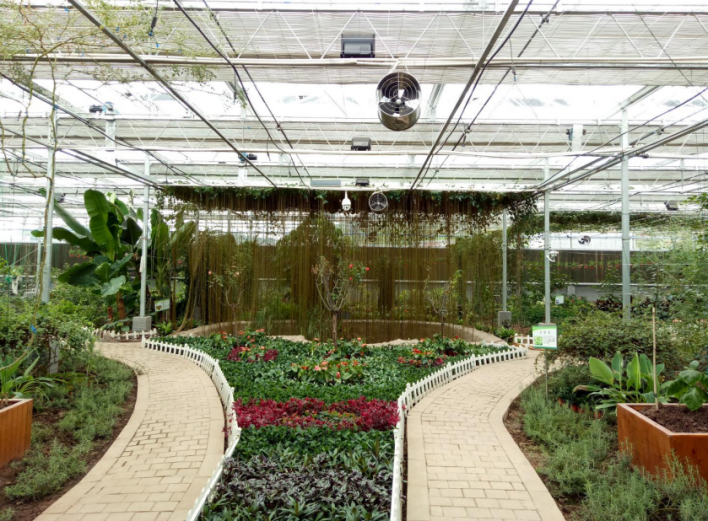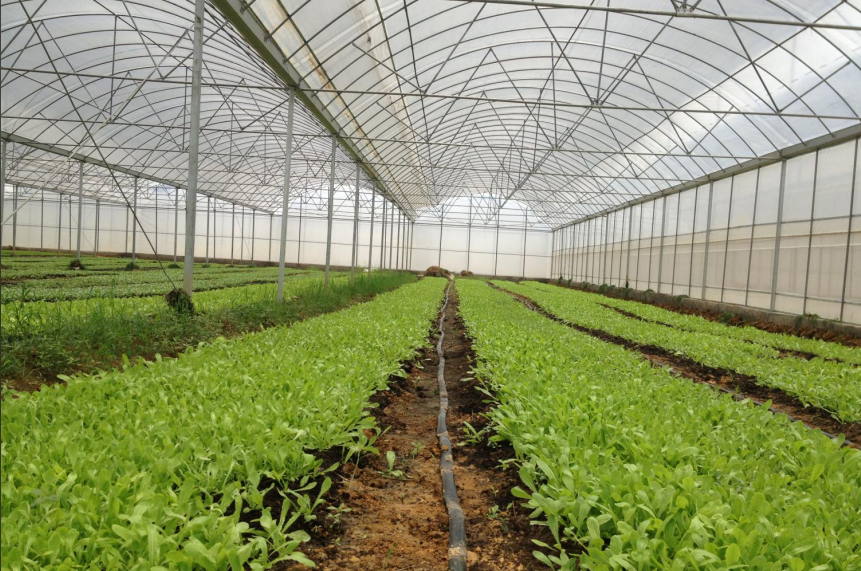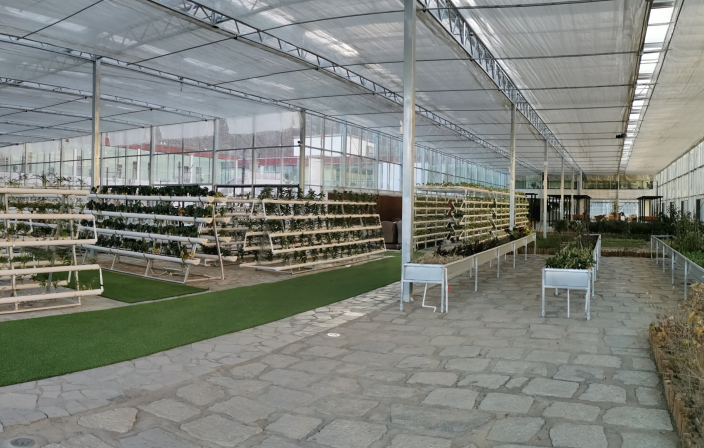Greenhouses are essential structures in modern agriculture, providing controlled environments for crops to thrive. They help regulate temperature, humidity, light, and more, offering optimal conditions for plant growth. But one common question that often comes up is: does a greenhouse need a floor? This seemingly simple question is tied to various factors, including the greenhouse's function, management, and the type of crops being grown. Let's explore the role of a greenhouse floor and why it's an important consideration in greenhouse design.
The Role of a Floor: More Than Just a Surface
The floor of a greenhouse is not just a flat surface for plants to grow on; it plays a crucial role in regulating the internal environment of the greenhouse. The design of the floor directly affects water management, temperature control, and weed prevention, all of which contribute to the health and productivity of the crops.

Water Management: Preventing Over-watering and Dryness
Proper water management is a core element of successful greenhouse cultivation. The moisture level in the soil is vital for plant root health, and the greenhouse floor design can help control water flow, ensuring that excess water drains properly or preventing water from being too scarce.
The choice of floor material has a significant impact on water management. Permeable surfaces help water drain away quickly, preventing water accumulation that could rot plant roots. Without a suitable floor, water may not drain properly, leading to waterlogged roots or dry soil, both of which negatively impact crop growth.
Weed Control: Reducing Competition and Promoting Healthy Growth
A greenhouse without a floor or with inadequate flooring materials can lead to weed growth, which competes with crops for space and nutrients. By installing appropriate flooring materials (such as plastic films or non-woven fabrics), weeds can be effectively suppressed, reducing the need for constant weeding.
Proper flooring materials not only prevent weeds from growing but also help maintain stable soil temperature and humidity. This enhances the overall growing conditions for plants, particularly in areas with high moisture, where good floor design can help keep the soil environment stable and reduce pest and disease issues.
Temperature Regulation: Helping Roots Thrive
Soil temperature is crucial for root development and nutrient absorption. The greenhouse floor plays a role in maintaining optimal soil temperature, especially in colder seasons. By using the right floor materials, soil warmth can be retained, which ensures that plant roots receive enough heat to promote growth, even in chilly weather.
When temperatures drop too low, plant roots can suffer from frost damage, stunting growth. Floor materials can insulate the soil, keeping the temperature steady and protecting crops from external climate fluctuations.
What About Greenhouses Without Floors? Flexibility and Cost
While many greenhouses include floors, some opt for designs without a hard floor, using bare soil or gravel. Though this design may present some challenges in management, it offers distinct advantages.

Better Ventilation
Greenhouses without hard floors typically allow for better airflow, reducing the buildup of excess moisture and heat, which can prevent mold and disease. Bare soil or gravel floors contribute to better ventilation and help avoid soil becoming too saturated, reducing the risk of root suffocation.
Lower Construction Costs
Opting for a greenhouse without a floor can significantly lower construction costs, making it a viable option for projects with limited budgets or temporary use. Simple designs that use bare soil or gravel are cost-effective and suitable for seasonal planting or short-term agricultural projects. This approach helps control overall building costs while still providing an effective growing space.
Increased Flexibility
Greenhouses without floors often offer greater flexibility, particularly for crops that require more space for root growth. Bare soil or gravel allows plant roots to expand freely, promoting healthier growth. This design is especially useful for organic farming or crops with specific growing requirements that need unrestricted root expansion.

Choosing the Right Flooring Material
When deciding whether to install a floor in a greenhouse, selecting the right material is crucial. Several factors, including drainage, temperature retention, and weed prevention, must be considered. Different materials have distinct benefits and will impact the overall greenhouse management and crop growth.
- Gravel Flooring: Excellent Drainage
Gravel flooring offers great drainage, making it ideal for crops that require well-drained conditions. It helps prevent waterlogging and root rot by allowing water to flow through easily. - Plastic Films or Non-Woven Fabrics: Weed Control and Temperature Maintenance
Plastic films or non-woven fabrics are commonly used in greenhouses. These materials prevent weeds from growing while helping to maintain the temperature and moisture levels in the soil, making them especially beneficial in humid or temperature-sensitive environments. - Concrete Flooring: Durable and Easy to Clean
Concrete floors are popular in commercial greenhouses, offering durability and ease of maintenance. They are ideal for large-scale operations where durability and cleanliness are priorities.
Welcome to have a further discussion with us.
Email:info@cfgreenhouse.com
Phone:(0086)13980608118
●#GreenhouseDesign
●#GreenhouseFlooring
●#WaterManagement
●#WeedControl
●#GreenhouseAgriculture
●#GreenhouseBuilding
Post time: Mar-06-2025







 Click to Chat
Click to Chat